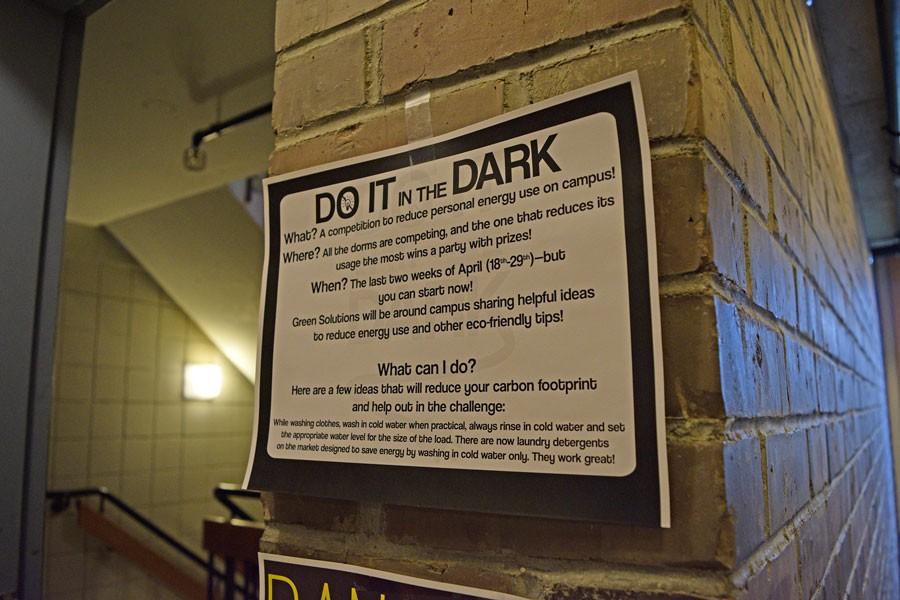Doing it in the dark
Over the past few weeks, in an effort to reduce energy consumption at Johnson State College, students in the residence halls were encouraged to “Do it in the Dark.”
Do It in the Dark was a competition between the residence halls on campus to reduce personal energy use on campus that was almost entirely run by students, with some staff supervision.
The idea for this competition came about when the club took a trip to Tufts University in Boston, Massachusetts to attend the Eco-Rep Symposium. While at this symposium, the club attended multiple forums, one of which sparked the idea for the competition.
“This energy reduction campaign has been implemented successfully at other college campuses across the nation, and we were excited to bring the idea back to Johnson,” said Student Government Association President Shavonna Bent. “The idea is to get college students laughing, thinking, and ultimately engaged with reducing their personal energy use in a fun manner.”
The competition was between the four residence halls at JSC, with the winners receiving a pizza party in their lobby, as well as a t-shirt giveaway.
“Woody Dionne from the physical plant, along with his team, have been taking meter readings throughout the year on the dorms’ weekly energy usage,” said Bent. “The data has been compiled, and whichever dorm reduces their energy usage the most, compared to their average weekly use, will win the prizes.”
Currently the Green Solutions Club is hosting this competition, with funding from the SGA. As this is the first year of this competition, this event is essentially a trial run. In the future, says Bent, after all the kinks have been worked out, “it would be great to work with more campus organizations such as SLAP and Serve to get even more students involved.”
“I’m happy to say that the students, under Shavonna’s able leadership, have taken on the coordination and publicizing of this competition all on their own,” said Russ Weis, a professor and new first year advisor who supervises the club. “I’ve only gotten periodic updates about it at our weekly Green Solutions meetings.”
“Russ Weiss has been supportive of the project since it was a far off dream and has been crucial in making the project a success,” said Bent. “One of the SGA Senators, Brendan Walsh, designed the posters and t-shirts that you may see around campus, and without the artistic support the campaign would have never gotten off the ground.”
“I’m involved by virtue of being the Green Solutions Advisor,” said Weis. “I’ve heard of similar competitions being held at other colleges — Oberlin springs to mind as an early adopter, and I also just recently visited Amherst College with my own kids and learned that that campus also runs such a competition — and I’m very happy JSC decided to take this on.”
In terms of the bigger picture, the competition mainly targeted what individuals could do to reduce their personal energy use, with the hope that it might draw attention to some of the larger issues currently plaguing the world.
“Issues such as societal energy use and efficiency, where we get our energy from the contribution of fossil fuels to climate change, and other related issues,” said Bent. “We thought it would be most helpful and engaging to interact with people on an individual level, and give them strategies to help change much bigger problems.”
There were a series of posters floating around campus to advertise for this event, with a tip for energy conservation on each. These tips included things such as taking shorter showers, unplugging unused chargers, and turning off water when brushing teeth — things in everyday life that people might not think to turn off after use.




